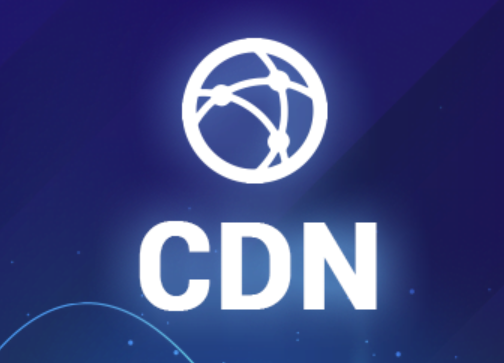CDN vs Traditional CDN: How AWS CloudFront Enhances Website Performance

In today’s fast-paced digital world, website performance is critical. Slow-loading websites can lead to poor user experiences, reduced engagement, and lower SEO rankings. A Content Delivery Network (CDN) plays a crucial role in enhancing website performance by optimizing content delivery across the globe. In this article, we’ll compare AWS CloudFront with traditional CDNs and explore how AWS CloudFront can significantly boost your website’s performance.
What is a Traditional CDN?
Traditional CDNs rely on a network of servers distributed across specific geographical locations. These servers store cached copies of static content such as images, videos, and stylesheets. When a user requests a piece of content, the server closest to them delivers the requested data, reducing latency and improving load times.
However, traditional CDNs may not offer the same level of optimization and flexibility as modern cloud-based CDNs like AWS CloudFront. Their reliance on static data centers, limited scalability, and relatively inflexible configurations can result in performance bottlenecks, especially as traffic grows.
What Makes AWS CloudFront Different?
AWS CloudFront, Amazon’s cloud-based Content Delivery Network, goes beyond traditional CDN capabilities. By leveraging Amazon Web Services (AWS) infrastructure, CloudFront offers a scalable, high-performance solution for delivering both static and dynamic content worldwide. Below are some of the key features that set AWS CloudFront apart from traditional CDNs:
1. Global Network of Edge Locations
Traditional CDNs have data centers in specific locations, which can sometimes create inefficiencies in global content delivery. AWS CloudFront operates with over 400 edge locations globally, ensuring that your content is delivered from a location that’s closest to the user, regardless of their geographical location. This widespread network helps reduce latency and accelerate page load times for a better user experience.
2. Integration with AWS Services
Unlike traditional CDNs, AWS CloudFront integrates seamlessly with a wide array of AWS services, including Amazon S3 (Simple Storage Service), EC2 (Elastic Compute Cloud), and Lambda@Edge. This integration allows for more efficient data management and quicker updates to content across the network.
3. Dynamic Content Acceleration
While traditional CDNs are designed primarily for static content, AWS CloudFront supports both static and dynamic content acceleration. Whether it’s real-time data or personalized content, CloudFront ensures low-latency delivery, enhancing the overall site performance, particularly for applications with dynamic content.
4. Improved Scalability and Flexibility
Traditional CDNs can struggle to handle traffic spikes or rapidly changing content, which can result in slowdowns or downtime. AWS CloudFront benefits from the inherent scalability and flexibility of AWS infrastructure, allowing it to handle massive amounts of traffic and adjust in real time without compromising performance.
5. Enhanced Security Features
Security is another key area where AWS CloudFront outperforms traditional CDNs. It provides robust DDoS protection through AWS Shield, supports SSL/TLS encryption, and offers custom HTTPS certificates. These features not only ensure content is delivered securely but also enhance your site’s overall security posture.
6. Advanced Caching and Customization
CloudFront allows for more advanced caching configurations than traditional CDNs. You can control how long content is cached at the edge locations, fine-tune cache behaviors, and set custom TTL (Time to Live) values. This flexibility ensures that content is served efficiently without overloading origin servers.
How AWS CloudFront Enhances Website Performance
Now that we understand the differences, let’s take a closer look at how AWS CloudFront directly impacts website performance:
Reduced Latency and Faster Load Times
By leveraging its extensive network of edge locations, AWS CloudFront reduces the distance between users and content, resulting in lower latency and faster load times. This is especially important for global audiences, as traditional CDNs may not have the same level of coverage in less populated or remote regions.
Improved SEO Rankings
Website speed is a crucial factor for SEO. Search engines, particularly Google, favor fast-loading websites. AWS CloudFront helps your site load faster by caching content closer to users, leading to improved SEO rankings and better user engagement.
Seamless User Experience
Whether your site has a lot of dynamic content or requires personalized data delivery, AWS CloudFront ensures that your users experience minimal delays. The CDN works seamlessly with your backend infrastructure to provide real-time, dynamic content while maintaining optimal speed.
Cost Efficiency
While traditional CDNs may charge high fees for additional features or bandwidth, AWS CloudFront allows you to pay only for what you use. The pricing model is flexible, and you don’t need to over-provision your infrastructure to handle traffic spikes, which can result in cost savings in the long run.
Conclusion: AWS CloudFront vs Traditional CDN
In comparison to traditional CDNs, AWS CloudFront offers a more robust, scalable, and flexible solution for optimizing website performance. With its global network of edge locations, dynamic content acceleration, and seamless integration with other AWS services, CloudFront is an ideal choice for businesses looking to improve speed, reduce latency, and enhance user experience.
If you’re looking to take your website’s performance to the next level, AWS CloudFront is a powerful tool that delivers results. Its features are designed to meet the needs of modern websites, offering high performance, security, and scalability, which are essential for staying competitive in the digital landscape.

